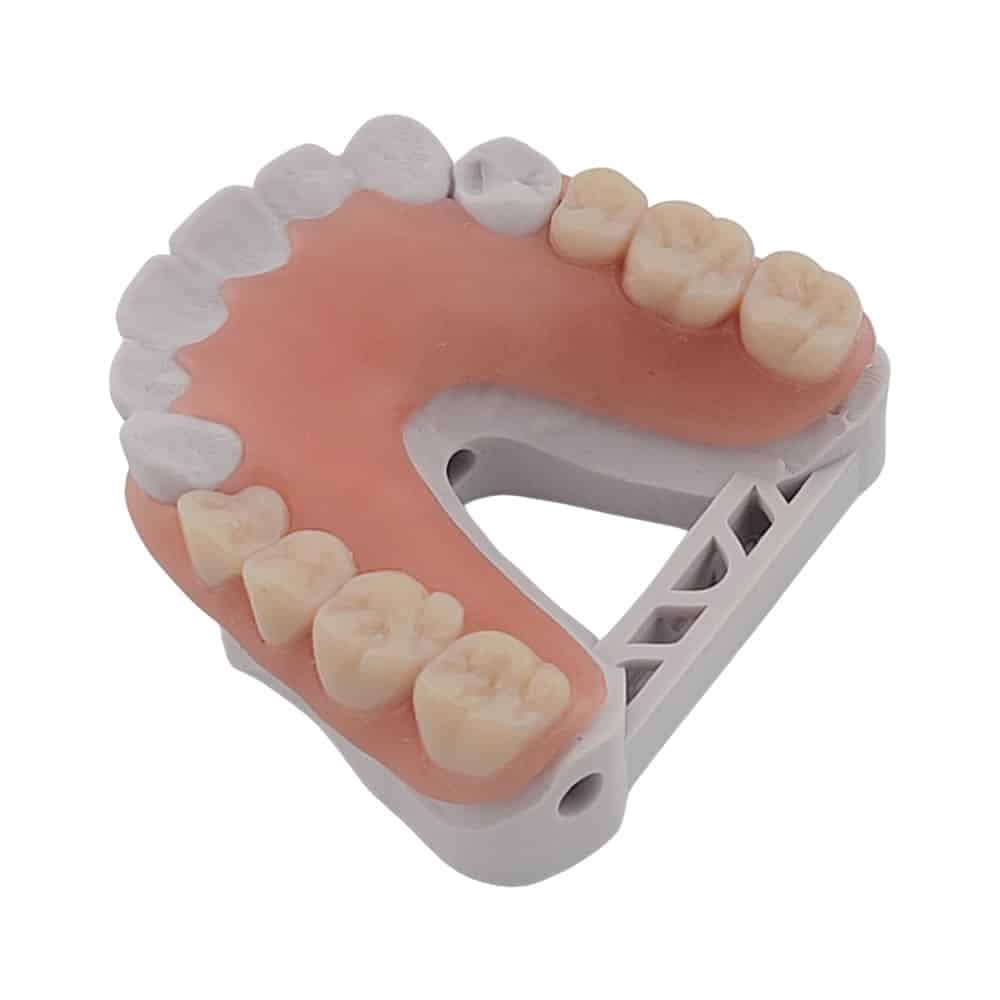Partial Dentures
Partial Dentures are a highly profitable part of restorative dentistry that is often overlooked. By implementing a digital workflow, these cases can be done in fewer visits with more predictable, consistent, functional, and esthetic results for your patients.
Intraoral scans are highly accurate tools to capture the information necessary to fabricate a partial denture properly and eliminate many of the traditional pitfalls of using traditional impressions to communicate with the lab. In combination with face scans or 2d images, intraoral scans give the technician more valuable data in a shorter amount of time than in the traditional workflow allowing us to streamline the process considerably, making it more comfortable in fewer visits for your patients.
Several material choices have their unique benefits. However, these benefits apply to all the materials we offer.
- High profit margin. Many cases can be completed in 2 visits.
- Consistent quality of fit and finish.
- Extremely accurate and well-fitting due to the fully digital manufacturing and polishing process.
- Teeth customized for each patient and 3D printed in full color, allowing you to deliver superior functional and esthetic results to your patients.
- Very few, if any, adjustments after insert.
Partial Dentures with a Metal Framework have been the standard for a long time. Patients report a more natural feeling when speaking, eating, and drinking, and plaque will not adhere to the metal. They are very strong and can be made very thin, allowing for maximum patient comfort.
However, the traditional process involves many manual steps and a lot of labor, ultimately leaving many opportunities for human interpretation or errors.
The improvements we have installed in our workflow, software, and equipment give us a completely digital manufacturing process, including the frameworks we 3D print directly in chrome cobalt and then polish with an automated electro-polisher.
No more investing and casting drastically limiting the chances for problems with the fit and eliminating all the possible issues with casting. We don’t have to manually grind and fit the partials to stone models, drastically reducing the chances of error. Our team does the “dirty work” with our software and 3D printers instead of manually waxing, casting, and fitting each case, allowing us to be much more efficient, accurate, and consistent.
Flexible Partial Dentures are generally considered more comfortable for the patient and more durable as they will not crack or break. Flexible dentures are often used as temporary, often called a flipper, during implant placement and healing or for immediate partial dentures after extractions.
Using traditional manufacturing techniques, they are much harder to fabricate and maintain due to the nylon materials used. They are hard to adjust and polish and impossible to add a tooth to or repair chair-side.
However, digital materials are not made from nylon. We directly 3D print our flexible frameworks and the denture teeth in full color, customized for each patient allowing for superior fit and esthetics. Our 3D-printed flexible partial dentures are delicate and lightweight yet very strong.
The best news for dentists is that they can be adjusted, customized, and polished easily chair-side, making the materials much easier to work with, especially on implant cases.


Workflow Comparison and ROI
Let's Talk
Find out how we can improve your bottom line. Contact us and one of our members will be happy to answer all of your questions.
